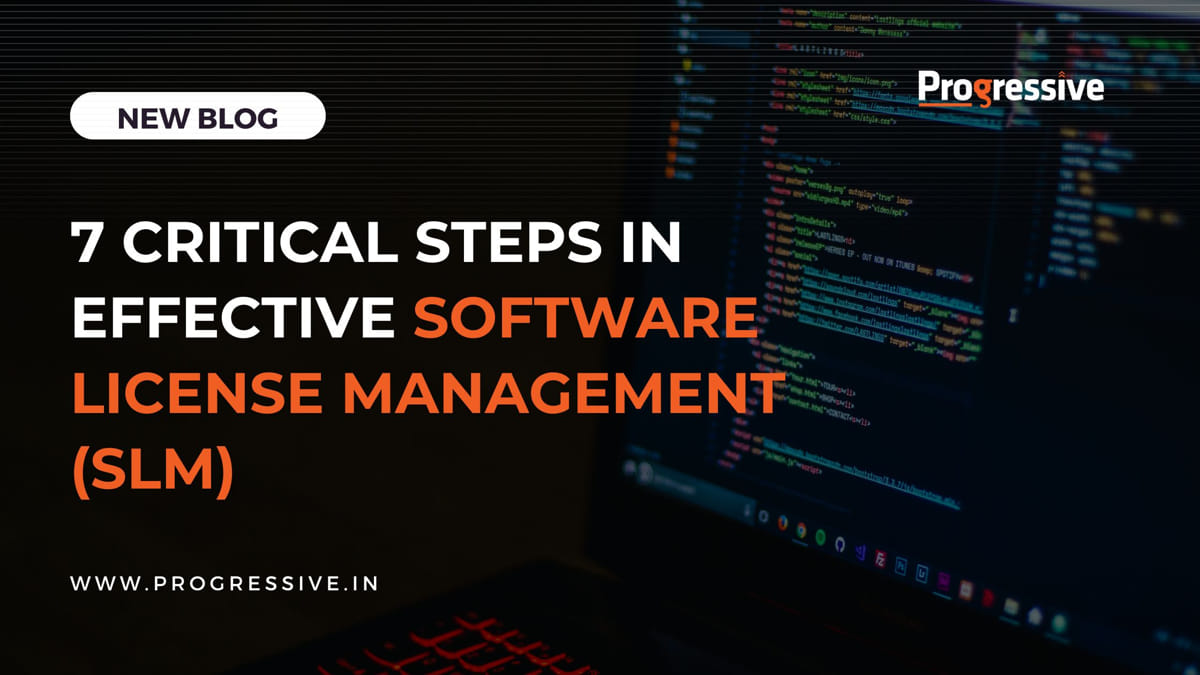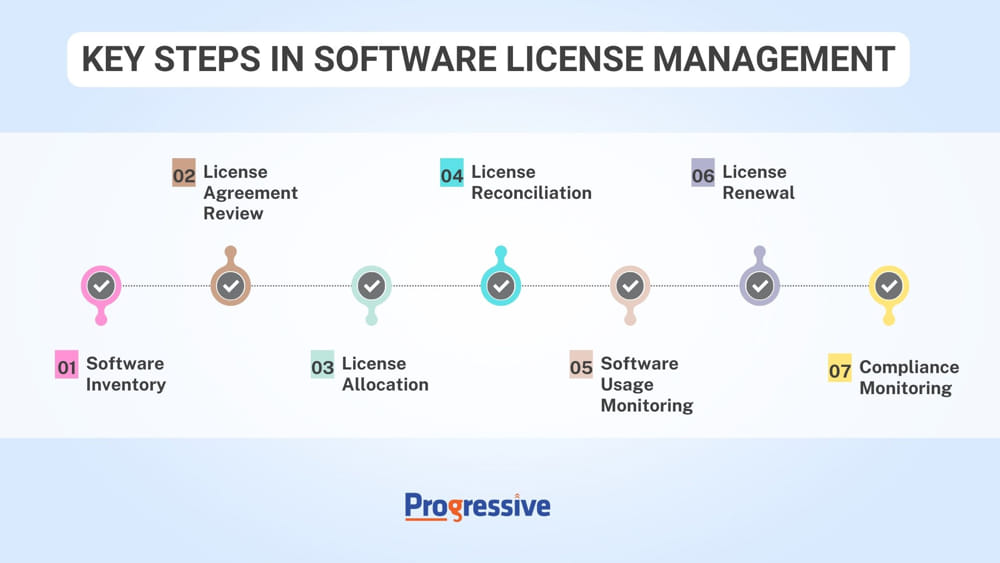
The importance and the intricacy of software license management (SLM) is increasing simultaneously. The advancements in technology bring new possibilities for your business. To fully reap its benefits, a solid software license management strategy must be implemented as a broader imperative to improve management.
Failing to do so could result in losing control over expenses, vendor non-compliance, and risking the business processes dependent on the software tools, ultimately hindering the success of your digital transformation.
Have a look at the following facts:
- Gartner states that companies can cut software costs by 30% by using SAM tools, optimizing software configurations, and recycling software licenses.
- An enterprise with an annual revenue of $83 million could see an 11% increase in profits by improving software compliance by 20%, according to the BSA Global Software Survey.
- NASA saved more than $100 million through software asset and license management. NextGov News
Software license management is the practice of keeping track of the software licenses your organization owns, ensuring that you are using them under the licensing terms, and avoiding overspending or non-compliance issues. Let’s explore how to effectively manage software licenses and why it is crucial for your business.
Here are the seven key steps involved in the Software License Management (SLM) process:
1. Software inventory: The first step in software license management is to get a complete and accurate inventory of all the software applications which your organization is using. This includes both desktop and server-based software.
2. License agreement review: The next step is to review the license agreements for each software application. This involves understanding the terms and conditions of use, including the number of licenses you have purchased, the number of users who can access the software, and any restrictions on the use of the software.
3. License allocation: Once you have reviewed the license agreements, the next step is to allocate the licenses to users based on the terms and conditions of use. This may involve assigning licenses to specific departments or individuals, or tracking usage of the software to ensure that it is within the license limits.
4. License reconciliation: Reconciling your software licenses with your inventory is an important step in software license management. This involves comparing the number of licenses you have purchased to the number of licenses in use. If there is a discrepancy, you may need to purchase additional licenses or take steps to reduce your usage.
According to Gartner, effective cost control can be achieved through clear visibility of software usage.
5. Software usage monitoring: This involves tracking who is using the software when they are using it, and how often. This information can help you to identify trends and usage patterns. This help you to make informed decisions about software purchases and license management.
6. License renewal: Software licenses typically have a limited lifespan, and it is important to renew your licenses before they expire. Renewal processes should be automated and timely to avoid disruptions to software usage and to avoid any penalties for non-compliance.
7. Compliance monitoring: Software license management also involves monitoring compliance with the terms and conditions of the license agreements. This includes ensuring that your organization is using the software under the licensing terms and that you are not using more licenses than you have purchased.

Why Software License Management Process is important?
An organization can face various problems due to improper software license management, including:
- Legal and financial penalties: Using software without proper licenses can result in legal penalties and fines for copyright infringement.
- Audits: Software vendors often conduct audits to ensure compliance with licensing terms. In the absence of proper license management, organizations can face significant financial penalties and legal action during such audits.
- Unauthorized software usage: Without proper SLM, employees may be using unlicensed software, putting the organization at risk of legal and financial penalties.
The average cost of non-compliance for using software without a license is $20,000. If non-compliance is discovered during an audit, the average cost is only $1,500.
- Over-spending: Organizations may end up purchasing more software licenses than they need, leading to overspending on software licenses.
- Inefficient use of resources: In the absence of proper software license management, organizations may not be utilizing their software licenses effectively, resulting in wasted resources and inefficiency.
- Software compatibility issues: In the absence of an SLM strategy, organizations may end up using outdated or incompatible software versions, leading to compatibility issues and difficulties in supporting the software.
- Inadequate security: Unlicensed software may pose a cyber security risk to an organization, as it may contain vulnerabilities or malware.
- Lack of software updates and support: Using unlicensed software can result in a lack of access to software updates and technical support, making it difficult to address software issues and bugs.
- Difficulty in planning and budgeting: Without proper software license management, organizations may face difficulties in planning and budgeting software purchases, upgrades, and renewals.
The Road Ahead…
As software companies continue to create more complex software products, license management has gained greater significance. The trend towards more advanced and automated software license management systems can simplify the process of tracking licenses and usage.
With automation-led efficiency and 100% visibility, organizations can streamline costs, improve productivity, and avoid audit risks. Progressive Infotech’s IT asset management services are driven by industry best practices for software license management that help you keep up with compliance, better manage licenses, and reduce the operational workload for you and your teams to focus on business priorities.